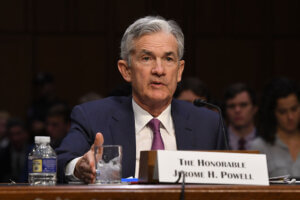
The decision reflects the Fed’s growing confidence in taming inflation and its renewed focus on supporting the job market.
In July, the unemployment rate in the United States increased to 4.3%, marking its highest level since October 2021, as reported by the Bureau of Labor Statistics. The rate remained relatively stable at 4.2% in the following month.
While unemployment remains low by historical standards, the recent government data has signaled a trend of “cooling” in the labor market, prompting a letter by three Democratic senators on Monday asking Fed Chair Jerome Powell to “consider implementing rate cuts more aggressively upfront to mitigate potential risks to the labor market.”
“Employment numbers adjust slowly, so the Fed should frontload rate cuts to avoid sliding towards a potential crisis,” wrote Senators Elizabeth Warren (D-Mass.), John Hickenlooper (D-Colo.) and Sheldon Whitehouse (D-R.I.).
In the memo, the senators also stated, “At the end of August 2024, the Bureau of Labor Statistics released their preliminary benchmark annual review of employment data, which revealed that there were 818,000 fewer jobs in the 12 months that ended in March of this year than were initially estimated. While these are not job losses, they do indicate that job growth has been much slower than the data previously indicated. Some conservative economists believe that job growth has been even weaker since then.”
Job Creation
A 50-basis-point rate cut by the Fed signals its strong desire to stimulate economic growth. Lower interest rates generally make borrowing cheaper for businesses, which can encourage them to expand operations, invest in new projects and potentially hire more workers. This increased economic activity can lead to job creation across various sectors.
For consumers, lower rates can stimulate spending, which in turn can drive demand for goods and services, potentially leading to more hiring to meet this demand.
A stronger economy often results in a more competitive job market. As businesses expand, employers may need to offer higher salaries to attract and retain talent, which would strengthen the bargaining positions of workers in salary negotiations. With the high cost of living, employees may push for larger salary increases to maintain their purchasing power.
In a growing economy, employees may feel more confident about seeking promotions or career advancements, even if it means changing employers. This was evidenced during the Great Resignation, when a large number of workers voluntarily left their jobs. The Covid-19 pandemic triggered a significant shift in the American workforce, with over 50 million employees quitting in 2022, following 47.8 million resignations in 2021.
Rate cuts could lead to a more stable job market, reducing the risk of layoffs and providing greater job security. As companies find it cheaper to borrow and invest, they may be more likely to retain existing staff and potentially create new positions.
Moreover, lower mortgage rates can boost construction activity and create jobs in that sector. While a rate cut is generally seen as positive for job growth, its effectiveness can depend on broader economic conditions, business confidence, and how companies choose to use the lower-cost capital available to them.
Source: Forbes


